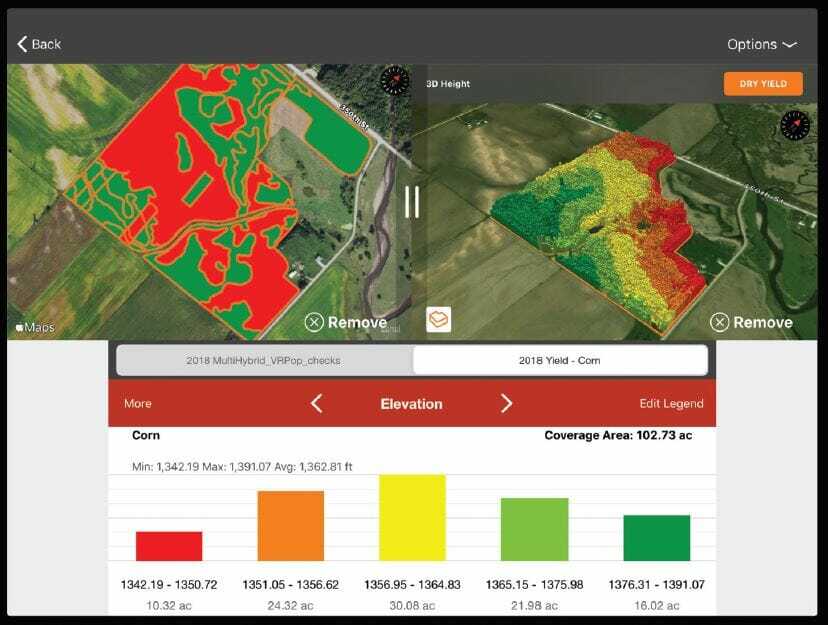Soil type, drainage and organic matter usually aren’t consistent throughout a field, calling for different hybrids in different areas. Just think how great crop performance could be if we all had the capability to place the correct seed on each acre!
Multi-hybrid capabilities allow you to plant two hybrids in the same row and switch as environments change, but it often requires a large investment to make multi-hybrid planting a reality. Split planting can be an easy, economical option for conducting on-farm research if there isn’t excessive variability in your soils. Split planting can be an effective way to generate powerful data to confirm your seed placement decisions in fields with only a few different soil types as digital farming has made this process more efficient.
There are many different insights we can gather by split planting. We can test different hybrids. We can test hybrids of different relative maturity to see effects on either yield or grain moisture. We also can use split planting to test different trait packages or seed treatments.
Although split planting can be a great on-farm research practice, don’t plant too many different hybrids in one field. Planting numerous hybrids creates lots of variables, making it difficult to make informed decisions. Gathering accurate insight starts with taking the time to enter the data correctly because someday you will want to review multiple years of this data.
We’re conducting split-planter research through Data Forward. If you want to learn more about conducting your own on-farm research, contact your Latham Precision Agronomy Advisors.
